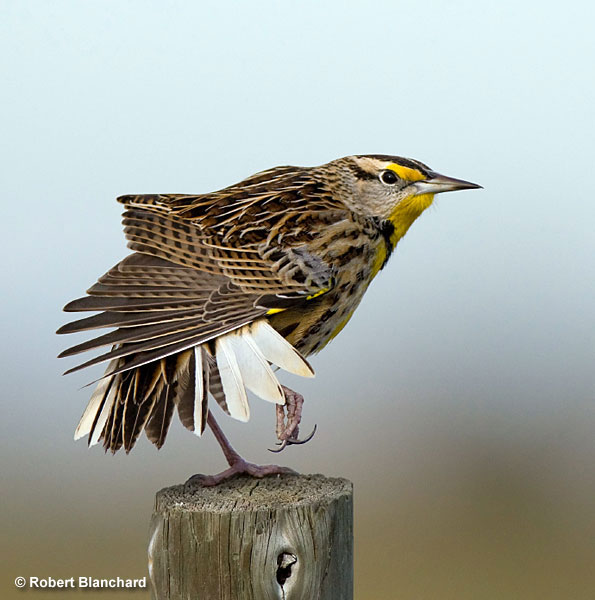
Birds live in different habitats, and roadsides are no different.
Do you know which species can be found there?
On this page
Hawks, Kites, Eagles – Family Accipitridae
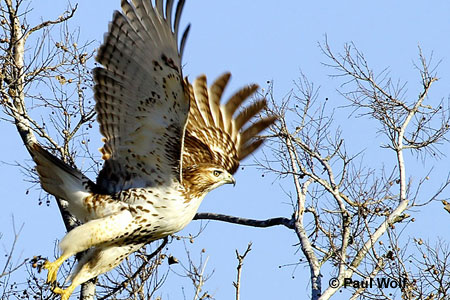
Red-tailed Hawks are often seen on power poles, fence posts or trees near highways. Immature birds have banded tails and can be easy to approach.
The Red-tailed Hawk is a large bird of prey that is native to North America. It is a member of the Accipitridae family and is commonly found in a variety of habitats, including deserts, grasslands, forests, and suburban areas.
The Red-tailed Hawk is easily recognizable by its distinctive appearance, which includes a large, broad wingspan, a rounded tail that is typically rusty red in color, and a light-colored breast with dark streaks. The bird’s upperparts are typically brown, while its underparts are lighter in color. The Red-tailed Hawk also has sharp talons and a hooked beak, which it uses to capture its prey.
Caracaras and Falcons – Family Falconidae
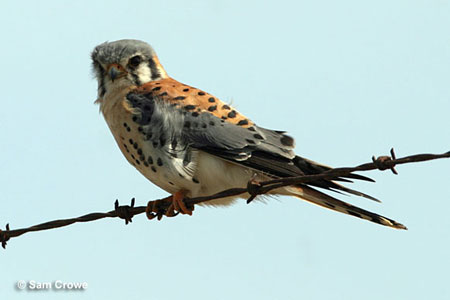
The American Kestrel is a small falcon. It is often observed on power line. Hovers when searching for prey.
The American Kestrel is a small bird of prey that is native to North and South America. It is a member of the Falconidae family and is commonly found in a variety of habitats, including grasslands, deserts, forests, and suburban areas.
The American Kestrel is easily recognizable by its distinctive appearance, which includes a small size, a long tail, and a flat, wide head. The bird’s plumage is typically colorful, with blue-gray upperparts, rusty-red underparts, and black and white stripes on the head and tail. The American Kestrel also has sharp talons and a hooked beak, which it uses to capture its prey.
Crows and Jays – Family Corvidae
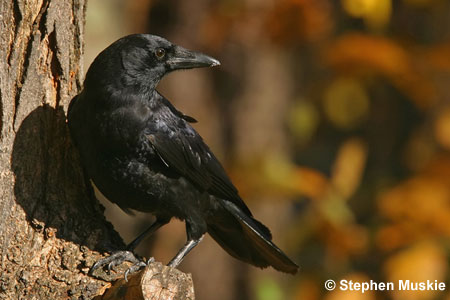
The American Crow can often be observed flying across highways. Flies with a rowing motion.
Blackbirds (including Meadowlarks, Blackbirds, Grackles, Orioles) – Family Icteridae
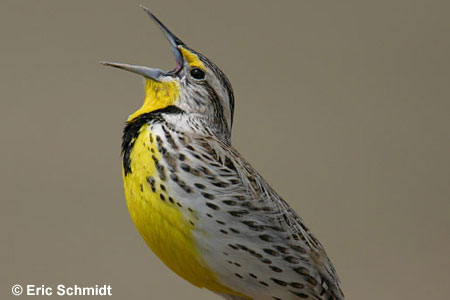
Western Meadowlark. Western and Eastern Meadowlarks are very similar, best told apart by voice. Both species often observed on fence or power lines.
The Western Meadowlark is a medium-sized bird that is native to North America. It is a member of the Icteridae family and is commonly found in grasslands, prairies, and agricultural areas.
The Western Meadowlark is easily recognizable by its distinctive appearance, which includes a plump body, a short tail, and a relatively long, straight bill. The bird’s plumage is typically brown and streaked on the upperparts, with a white belly and yellow throat. It also has a distinctive, flute-like song that is often heard in the open grasslands where it lives.
Shrikes – Family Laniidae
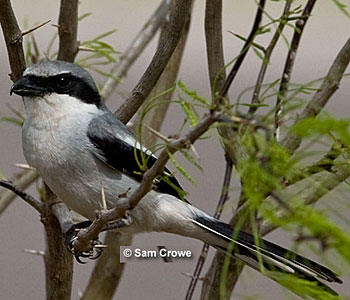
Loggerhead Shrike. Shrikes behave as small hawks, taking grasshoppers, mice or other birds. Often observed on power lines. Compare with Northern Mockingbird.
Shrikes are a group of passerine birds that are found throughout the world, with the exception of Australia and Antarctica. They are members of the Laniidae family and are often referred to as “butcher birds” due to their habit of impaling their prey on thorns or barbed wire fences.
Shrikes are medium-sized birds with a distinctive appearance, including a large head, hooked beak, and sharp talons. Their plumage is typically gray or brown on the upperparts, with white or pale gray underparts. Some species of shrikes have black masks and distinctive wing markings.
Towhees and Sparrows – Family Emberizidae
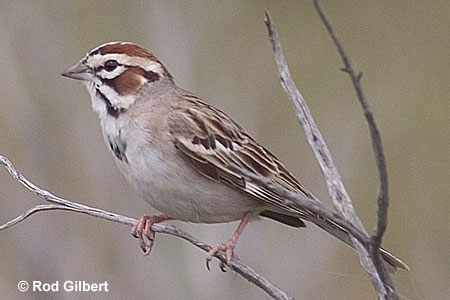
The distinctive Lark Sparrow is often observed on fence lines. White tail feather pattern obvious and distinctive in flight.
The Lark Sparrow is a medium-sized bird that is native to North America. It is a member of the Emberizidae family and is commonly found in grasslands, prairies, deserts, and agricultural areas.
The Lark Sparrow is easily recognizable by its distinctive appearance, which includes a large head, a short, conical bill, and a distinctive, streaked crown with a central spot. The bird’s plumage is brown and streaked on the upperparts, with a white belly and rusty-red undertail coverts. It also has a distinctive, warbling song that is often heard in the open grasslands where it lives.

